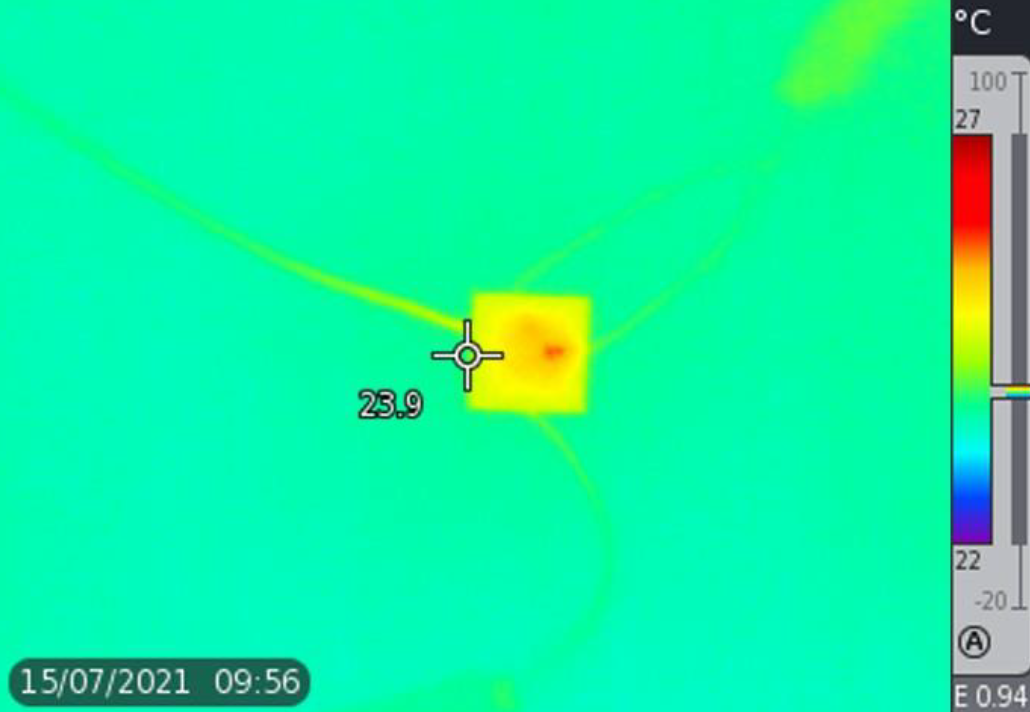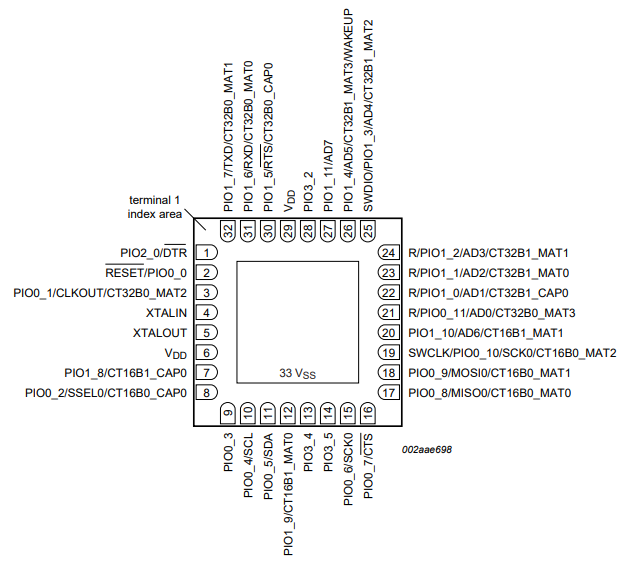I have received two boards from one of our customers that have the same defect. It is a short circuit between VCC and GND. I was able to trace this short circuit down to the MCU (which is a LPC1114 from NXP) with a thermal camera. These boards were running quite some time at the customer site, until the short occurred.
In the pictures below you can see two different MCUs. One that is still soldered on the PCB and one that was removed from the PCB and supplied with VCC/GND.
Edit1: In both pictures, Pin1 of the CPU is on top-right corner (TOP view of the MCU).
My questions to you:
- Has anyone ever experienced such an internal MCU short?
- What could be the cause of such an internal MCU short? (Guessing accepted :-)
- Is it possible that such a short could happen when there is too high temperatures involved?



